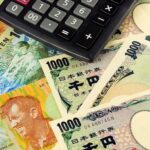The USD/JPY pair has retreated from a two-month high of 150.32, influenced by a decrease in US Treasury yields. Currently trading at 149.55, the pair faces key resistance at the 100-DMA and the top of the Ichimoku Cloud around 150.84/151.50. Further declines could see USD/JPY testing support at 148.84, with a potential drop to 147.35 if sellers gain momentum.
Technically, the USD/JPY has consolidated after reaching a new monthly high above 150.00, last seen in July 2024. As it approaches the Ichimoku Cloud and the 100-DMA at 150.84, buyers face a challenging scenario to break the 150.85/151.50 area. A successful breach could shift the USD/JPY bullish, potentially testing the July 30 high at 155.21. Conversely, if the pair extends its losses past the Tenkan-Sen at 148.84, sellers could drive the price towards the October 8 low of 147.35.
The Japanese Yen is one of the most traded currencies globally, with its value influenced by factors such as the Japanese economy’s performance, Bank of Japan policies, bond yield differentials between Japan and the US, and trader risk sentiment. The Bank of Japan plays a crucial role in controlling the Yen’s value through its interventions in the currency market. The BoJ’s ultra-loose monetary policy from 2013 to 2024 led to a depreciation of the Yen against other major currencies.
In the past decade, the BoJ’s ultra-loose policy has resulted in a widening policy divergence with other central banks, particularly the US Federal Reserve. This divergence has favored the US Dollar against the Japanese Yen, but recent moves by the BoJ to abandon the ultra-loose policy and interest rate cuts by other central banks are narrowing this gap. The Japanese Yen is also considered a safe-haven investment, with investors flocking to the currency during times of market stress due to its perceived reliability and stability.
In conclusion, the USD/JPY pair has retreated from recent highs, influenced by US Treasury yields and technical resistance levels. The pair faces key support and resistance levels that could determine its future direction. The performance of the Japanese economy, Bank of Japan policies, and global market sentiment will continue to influence the value of the Japanese Yen and the USD/JPY pair in the coming days.











